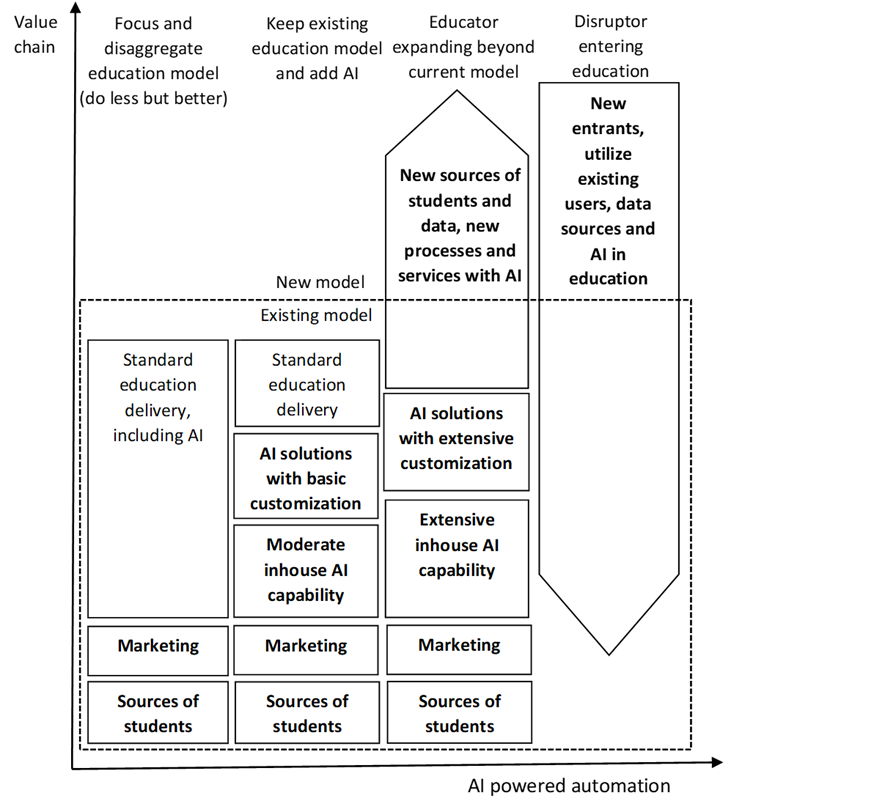Dr Alex Zarifis
Universities, like many other organizations, are going through a disruptive digital transformation. The alure of AI and automation, allowing smarter, more responsive and scalable universities is clear. What is less clear is what a university will look like five years into this process. We identified four business models that can give leaders a destination for the digital transformation journey (Zarifis and Efthymiou 2022):
(1) This first education business models that is optimized for AI is to focus and disaggregate: In addition to the classroom the successful delivery of education requires a supply chain. With the changes in this supply chain caused by AI an educator can chose to focus on one part of this supply chain. They can focus on the part of the supply chain where their skills are best suited and build an ecosystem for the rest.

Figure 1. Four education business models that are optimised for AI (adapted from (Zarifis, Holland, and Milne 2019))
(2) The second model that is optimized for AI is to keep the existing education model and add AI: Despite the transformational nature of AI, some universities use AI to make the existing model more effective without changing it fundamentally. This may involve more back-office AI applications and less student facing applications.
(3) The third education model that is optimized for AI is an educator expanding beyond the current model: In this model the educator takes advantage of new opportunities emerging from AI and digital transformation. The educator keeps their existing part of the education supply chain, but they also add new processes that take advantage of AI to reach more students and more data.
(4) The fourth model that is optimized for AI is the model of a disruptor entering education: As technology plays a more decisive role in many areas, including education, tech savvy companies can use their advanced systems and existing user base and add other new services. Education can be added as a new feature to a platform in a similar way that banking and insurance services have been added.
The four models presented give a strategic direction and make it easier for the leader of the digital transformation to communicate it. The leader of digital transformation will have to make many choices along this journey, so it is important that all the decisions are compatible with the chosen education business model.
References
Zarifis A. & Efthymiou L. (2022) ‘The four business models for AI adoption in education: Giving leaders a destination for the digital transformation journey’, IEEE Global Engineering Education Conference (EDUCON), pp.1866-1870. https://doi.org/10.1109/EDUCON52537.2022.9766687
Zarifis A., Holland C.P. & Milne A. (2019) ‘Evaluating the impact of AI on insurance: The four emerging AI and data driven business models’, Emerald Open Research, pp.1-17. https://emeraldopenresearch.com/articles/1-15/ (open access)